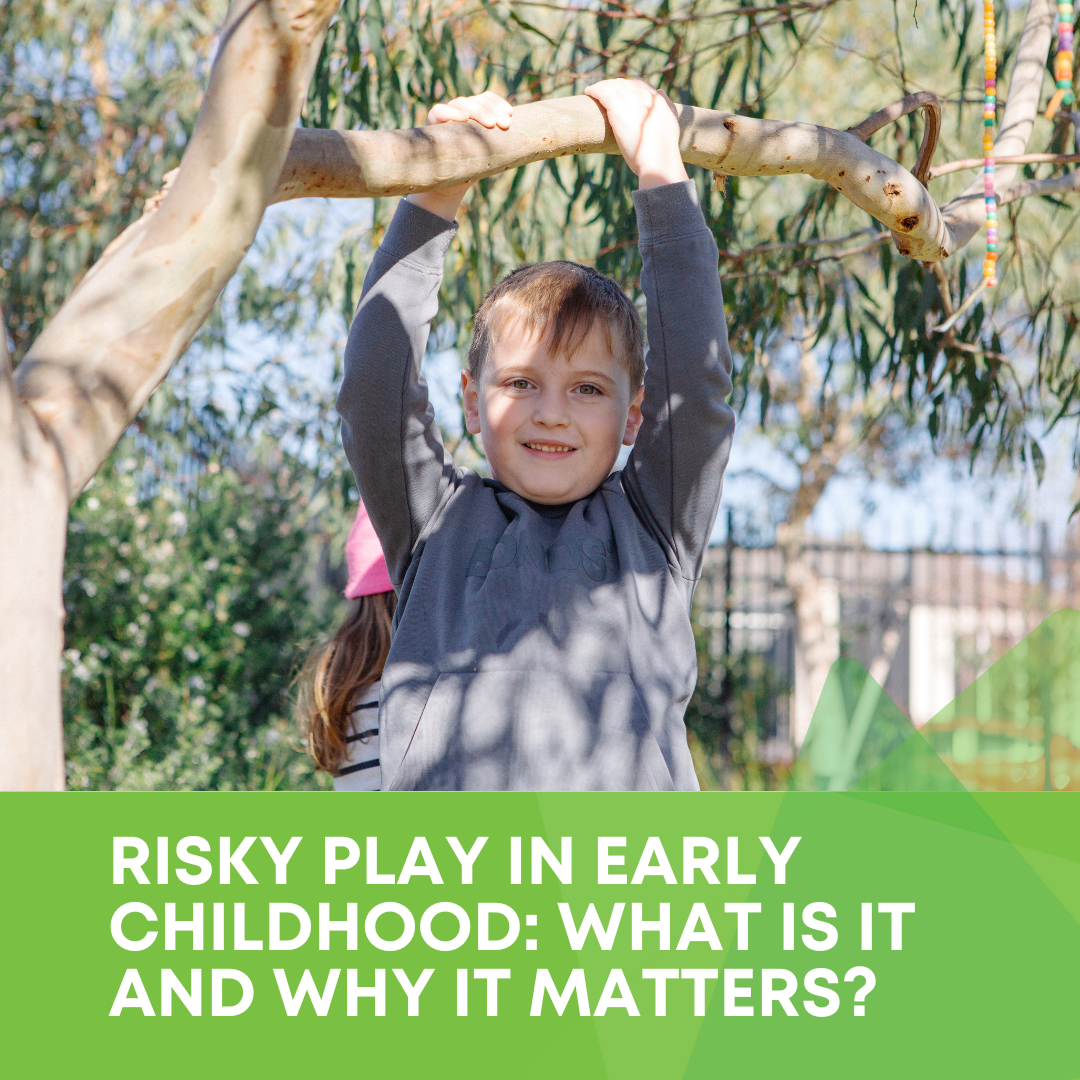Children become strong in their physical learning and mental wellbeing: When children are provided with challenging outdoor environments, they get encouraged to risk-taking and risky play experiences.
The Early Years Learning Framework for Australia
What is Risky Play?
Risky play refers to a type of play activity or experience that involves a degree of uncertainty, physical challenge, and the potential for injury or failure.
It Provides children with opportunities to challenge themselves physically, emotionally, and mentally by engaging in activities where they can test their limits, make decisions, and learn to assess and manage risks in a controlled and supervised environment.
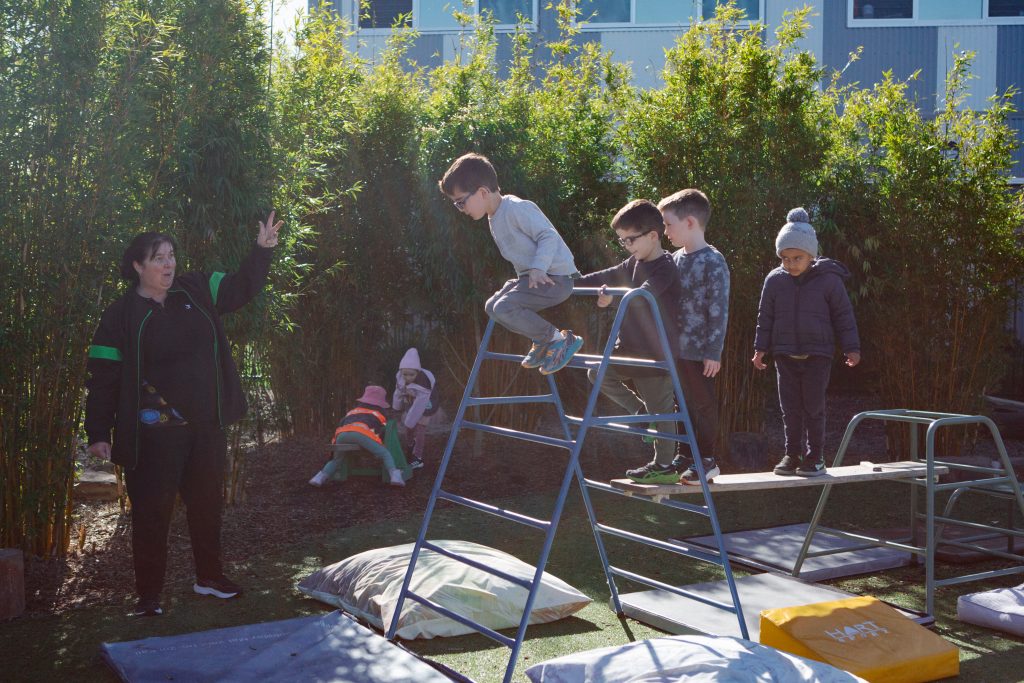
Types of Risky Play
According to Norwegian professor Ellen Sandseter, there are 8 different categories of risky play as perceived by a child, including:
1. Great Heights: Climbing, jumping, balancing, etc. with a risk of falling.
2. High Speed: Uncontrolled speed and pace while running, biking, sledding, etc. with a risk of collision or injury.
3. Dangerous Tools: Knife, axe, saw, etc. with a risk of injury.
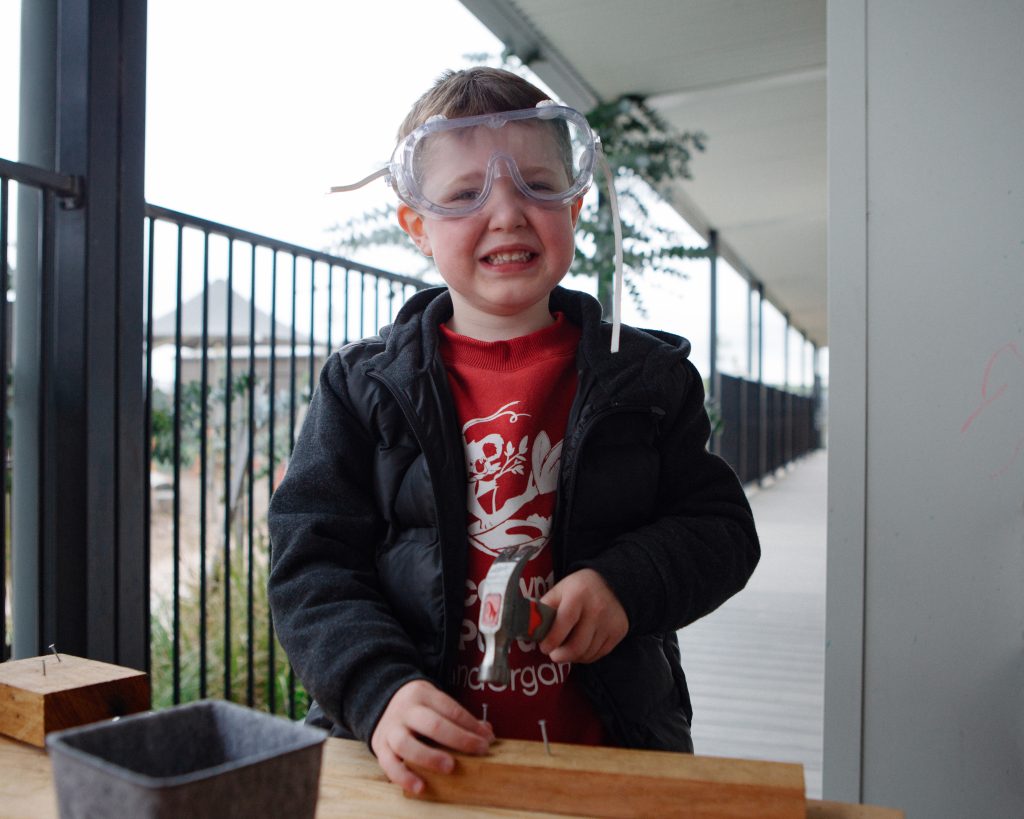
4. Dangerous Elements: Fire pits, cliffs, open bodies of water, etc. with a risk of falling or injury.
5. Rough & Tumble: Wrestling with other children, roughhousing, fencing with sticks, snowball fights, etc. with a risk of injury.
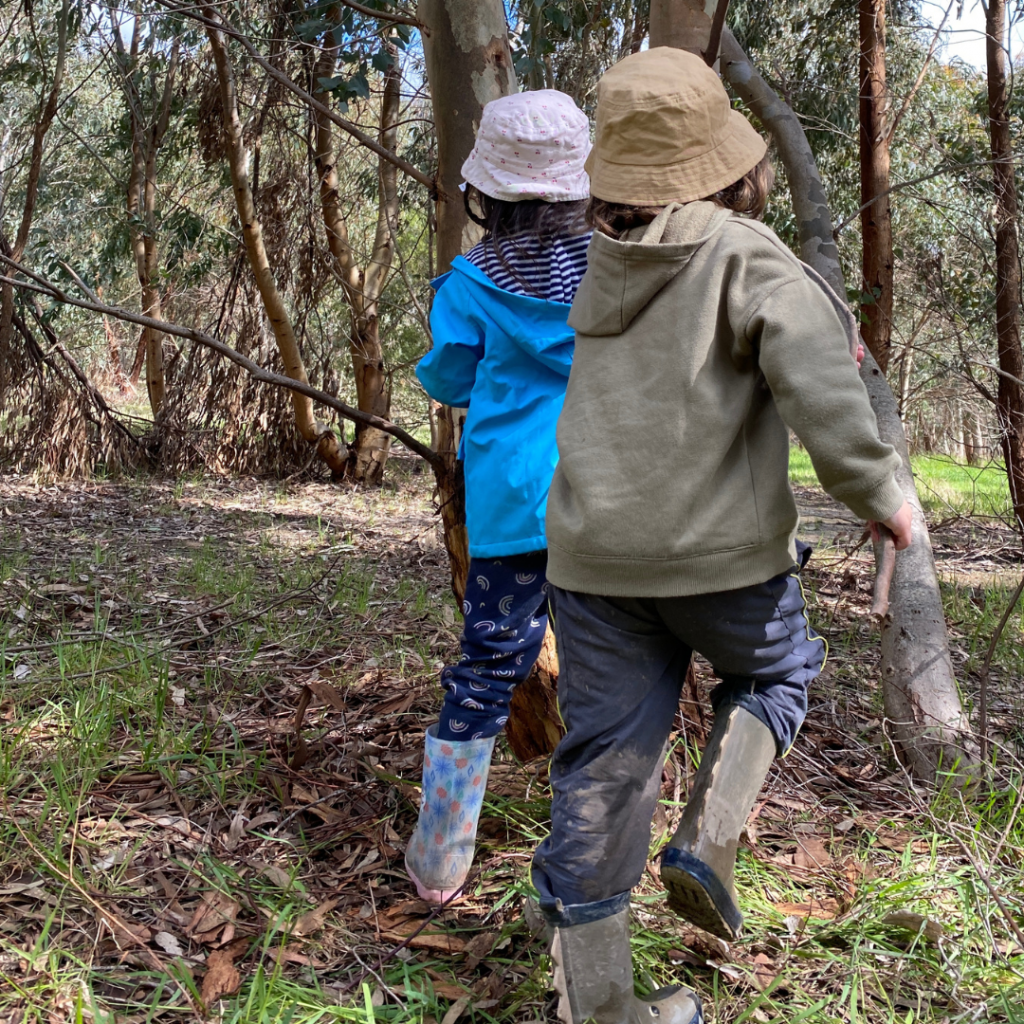
6. Unsupervised play: Exploring alone with a risk of getting lost.
7. Impact: Crashing into things for fun with a risk of injury.
8. Vicarious: The thrill of watching other (often older) children take risks.
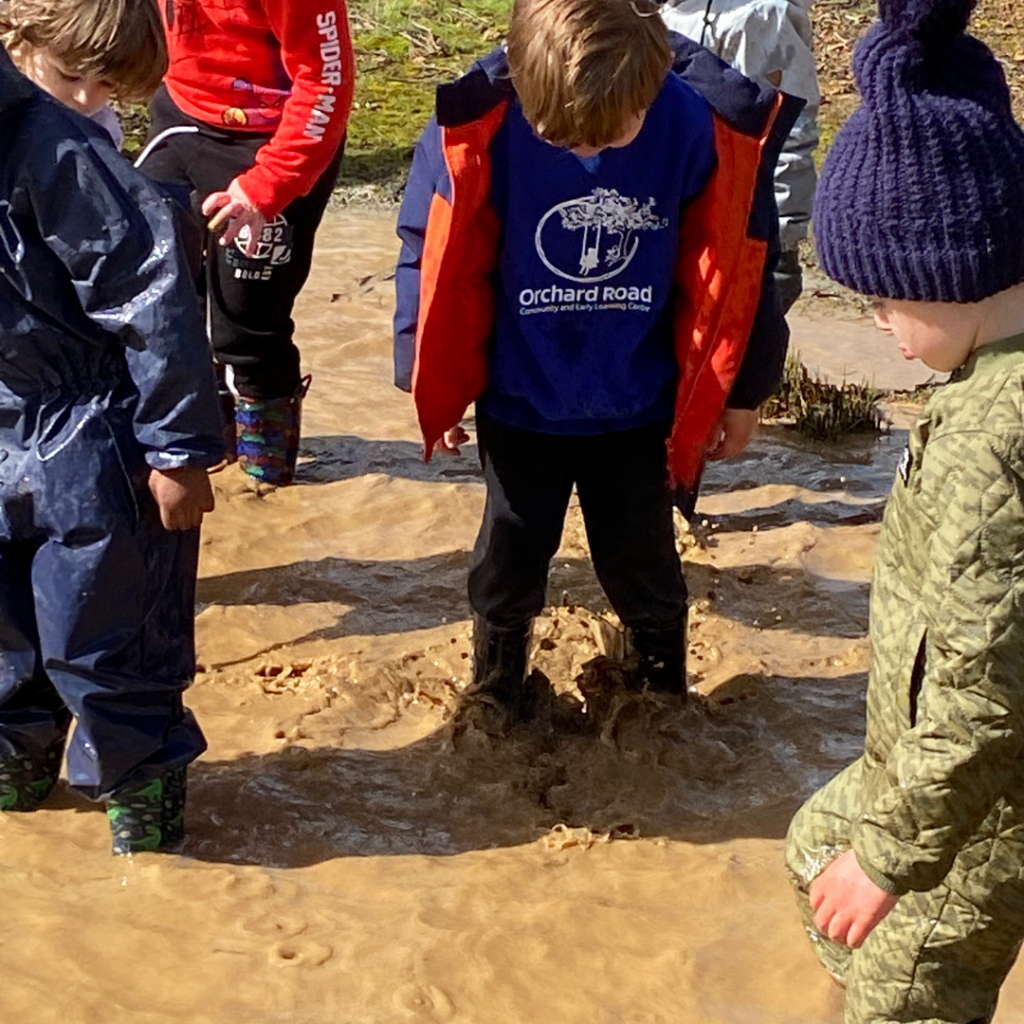
9 Benefits of risky play
Risky play in early childhood can have several benefits for a child’s development. While it may sound contradictory, exposing children to controlled, age-appropriate risks can help them build valuable skills and characteristics, such as:
1. Physical Development:
Risky play can help children develop strength, coordination, balance, and fine motor skills. They learn to assess their physical abilities and limitations, promoting a sense of mastery over their bodies.
2. Cognitive Development:
Risky play encourages problem-solving and decision-making. Children must assess situations, make choices, and adapt their actions based on the challenges they encounter. This fosters cognitive development and critical thinking skills.
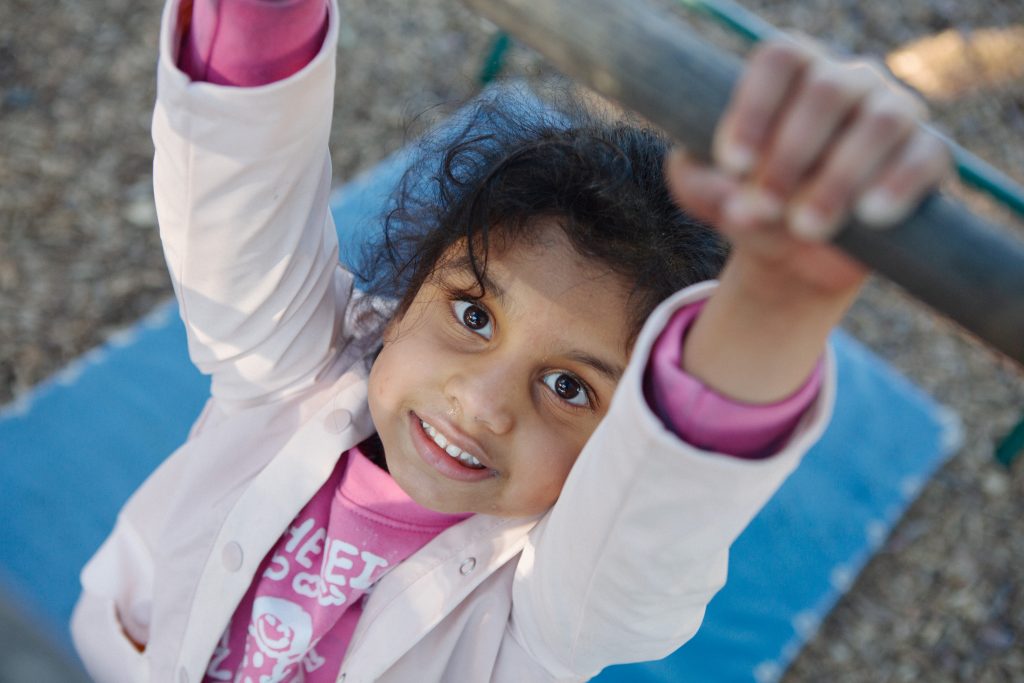
3. Emotional Resilience:
Engaging in risky play allows children to confront and manage fear, anxiety, and stress. Overcoming these challenges helps them build emotional resilience, confidence, and a sense of self-assuredness. They learn to manage their emotions and develop a healthy relationship with fear and uncertainty.
4. Social Skills:
Risky play often occurs in social settings, such as playgrounds or group activities. This gives children the opportunity to interact with peers, negotiate rules, take turns, and collaborate. They learn to communicate effectively and develop social skills like empathy and cooperation.
5. Creativity and Imagination:
Risky play is often unstructured, allowing children to use their imagination and creativity. They may turn a fallen tree into a pirate ship or a rocky outcrop into a dragon’s lair. This kind of play encourages creativity and imaginative thinking.
6. Self-Esteem:
Successfully navigating risky situations can boost a child’s self-esteem and self-confidence. When they conquer challenges and take measured risks, they gain a sense of accomplishment, which contributes to a positive self-image.
7. Risk Assessment:
By engaging in risky play, children learn to assess and manage risks. They become more adept at distinguishing between safe and dangerous situations, which is a valuable life skill. It can help them make safer choices as they grow older.

8. Independence:
This kind of play promotes independence and autonomy. Children learn to trust their judgment and make decisions on their own. This can lead to a sense of self-reliance and self-sufficiency.
9. Respect for Nature:
Many of these kinds of play occur outdoors and involve interaction with the natural environment. This fosters an appreciation for nature and a sense of environmental responsibility.
5 Ideas for Risky Play at Home for Children Under 5:
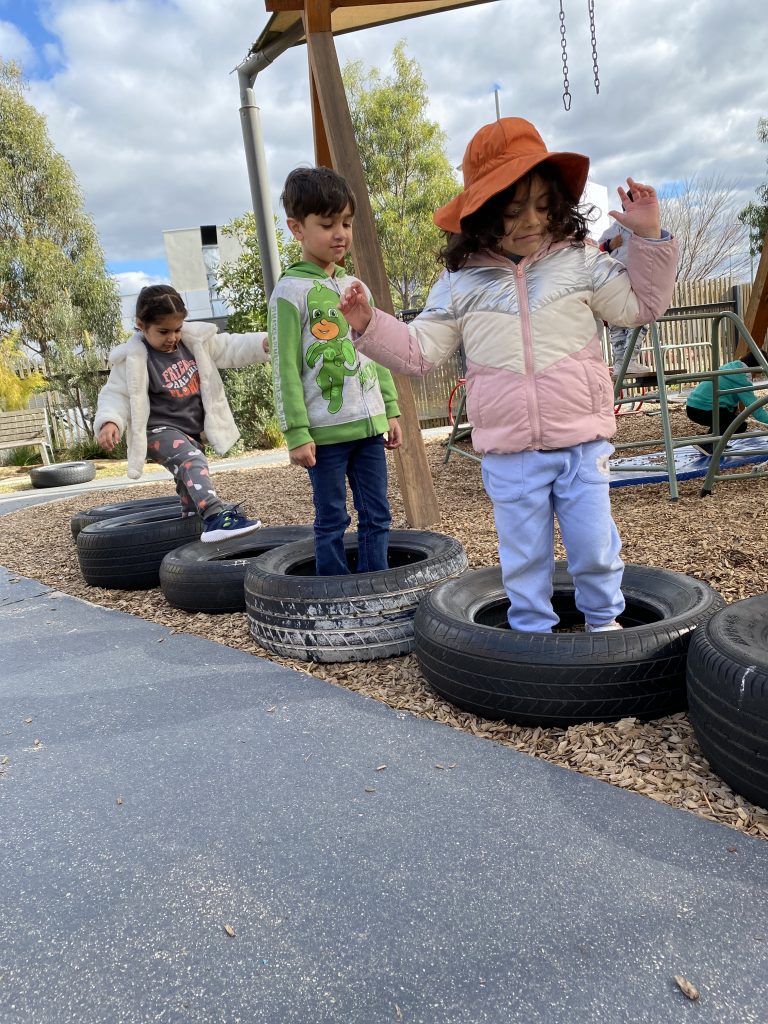
- Set up a low and sturdy climbing structure in the backyard.
- Create a messy play area with sensory materials like mud, sand, or water.
- Design a simple obstacle course using household items like cushions, pillows, and small stools.
- Organise a nature scavenger hunt in your backyard or a nearby park. Provide a list of items for the child to find, such as different leaves, rocks, or flowers.
- Go for a bike or scooter ride.
It’s important to note that while risky play can have many benefits, it should be supervised to ensure safety and be age appropriate.
Find out more about Risky Play by visiting the ACECQA website:
Interested in similar content? Check out our related articles:
12 Benefits of four-year-old kindergarten – The Y Whittlesea Children’s Programs (ymca.org.au)


